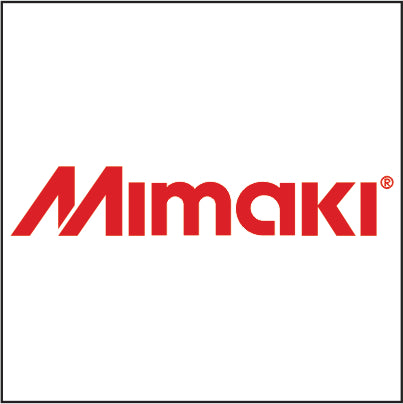Eco-Solvent Inks vs. Solvent Inks: What’s the Difference, and Which One Should You Choose?

In the printing industry, selecting the right ink type can make a world of difference in output quality, durability, and cost. Eco-Solvent Inks vs. Solvent Inks is a popular debate among those in wide-format and digital printing, especially for brands like Mimaki digital ink and Roland ink for printing. So, what are the real differences, and how do you deci
de which ink type is best for your needs? Let’s break it down and explore what each type offers, so you can make an informed choice.
What Are Solvent Inks?
Solvent inks have been a standard in the printing industry for years, known for their durability and intense color output. They are designed to adhere well to non-porous surfaces, like vinyl and PVC, making them ideal for outdoor signage. However, they contain aggressive chemical solvents that can release volatile organic compounds (VOCs) during printing.
Advantages of Solvent Inks
- Longevity: Solvent inks offer superior resistance to fading and weather conditions, lasting up to five years or more outdoors.
- Vivid Colors: These inks are known for producing rich and vibrant colors, ideal for high-impact visual applications.
- Cost-Effective: Compared to other ink types, solvent inks are typically more affordable, which is a huge plus for high-volume printing needs.
Drawbacks of Solvent Inks
Despite their benefits, solvent inks come with certain downsides:
- Environmental Concerns: Due to VOC emissions, solvent inks require proper ventilation and may not be ideal for eco-conscious businesses.
- Health Risks: Prolonged exposure to VOCs can cause respiratory issues, necessitating the use of protective gear.
- Drying Time: These inks require a longer drying time, which can slow down production speeds.
What Are Eco-Solvent Inks?
Eco-solvent inks were developed as a more environmentally friendly alternative to traditional solvent inks. While they still use solvents, they rely on milder, biodegradable versions. These inks release fewer VOCs, making them safer for indoor use and better for the environment.
Advantages of Eco-Solvent Inks
- Lower VOC Emissions: Eco-solvent inks release significantly fewer VOCs, which reduces the need for extensive ventilation.
- Versatility: These inks are compatible with a range of substrates, from banners to posters, and are ideal for both indoor and outdoor applications.
- Quicker Drying Time: In many cases, eco-solvent inks dry faster, allowing for faster turnaround times.
- Less Odor: Compared to solvent inks, eco-solvent inks have a reduced odor, making them more pleasant to work around.
Drawbacks of Eco-Solvent Inks
While eco-solvent inks are an excellent alternative, they do have some limitations:
- Higher Cost: Due to the added environmental benefits, eco-solvent inks tend to be more expensive.
- Durability: Eco-solvent inks, while fairly durable, may not hold up as well under extreme weather conditions as solvent inks do.
- Limited UV Resistance: While some eco-solvent inks are UV-resistant, they generally do not provide the same level of protection as traditional solvent inks.
Eco-Solvent Inks vs. Solvent Inks: Key Differences
When deciding between Eco-Solvent Inks vs. Solvent Inks, there are several key differences to consider:
- Environmental Impact: Eco-solvent inks are the clear winner here, emitting fewer VOCs and being generally safer for indoor printing.
- Durability: Solvent inks are better suited for harsh outdoor conditions, offering superior resistance to weather and UV rays.
- Application Versatility: Eco-solvent inks are ideal for projects where indoor and outdoor versatility is needed. Roland ink for printing and Mimaki digital ink are popular options within this category, offering excellent results on a range of media types.
Which Ink Should You Choose?
The choice between Eco-Solvent Inks vs. Solvent Inks largely depends on your specific needs and values. Here are some guiding factors:

Consider Your Printing Environment
If you operate in an environment where VOC emissions are a concern, such as an indoor or small studio, eco-solvent inks are the safer choice. These inks can reduce health risks associated with VOCs, and their mild odor makes them more comfortable for indoor spaces.
Evaluate Your Budget
For high-volume projects with tight budgets, solvent inks can offer cost savings and durable results. Eco Sol Ink provides a compromise between quality and environmental impact, though it might require a higher initial investment.
Assess Print Durability Needs
Solvent inks excel in terms of outdoor durability. For applications where signage will be exposed to extreme weather, solvent inks are the way to go. However, eco-solvent inks also hold up well in most outdoor settings, making them a strong option for projects where environmental impact matters.
Use Cases: Eco-Solvent Inks vs. Solvent Inks
Best Uses for Solvent Inks
- Billboards and Outdoor Signage: Solvent inks are unmatched in durability, which is crucial for outdoor displays.
- Vehicle Wraps: The adherence properties and resistance to fading make solvent inks ideal for vehicle wraps that need to withstand different weather conditions.
Best Uses for Eco-Solvent Inks
- Indoor Signage and Point of Sale Displays: For applications requiring vibrant colors and minimal odor, eco-solvent inks shine.
- Posters and Wallpaper: The environmental benefits and reduced health risks make eco-solvent inks perfect for indoor graphics.
Comparing Costs and Maintenance
While solvent inks are generally more affordable upfront, they may require additional costs in the long term for ventilation and protective equipment. Eco-solvent inks, though slightly more expensive, can reduce maintenance costs in some cases due to their quicker drying times and milder odor.

Conclusion: Making the Right Choice for Your Printing Needs
Both Eco-Solvent Inks vs. Solvent Inks have their advantages and limitations. If you prioritize durability and cost-effectiveness for outdoor applications, solvent inks may be the best fit. However, if you’re looking for a versatile, eco-friendly option that works well for indoor and outdoor settings alike, eco-solvent inks are an excellent choice. By weighing your budget, environmental priorities, and durability needs, you’ll be able to select the ink that best aligns with your project requirements.







